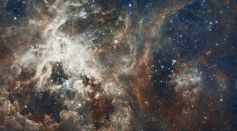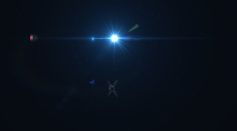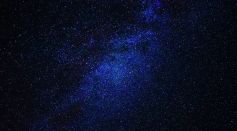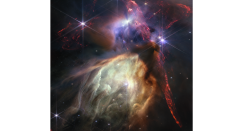Tags: Stars

JWST Explores 'The Brick' in the Milky Way, Unveiling Frozen Carbon Monoxide and Posing Challenges to Star Formation Theories
Giant Coma Stream Reveals First Intergalactic Star Trail, Unveiling Cosmic Mysteries

Three Mysterious Baby Stars Situated at Milky Way's Heart Found To Be Unusually Young
Stars Found in Mysterious River of Hydrogen Gas Flowing in Milky Way’s Outskirts
Dwarf Galaxies Take a 10-Million-Year Delay in Blowing Up Gas, Allowing More Stars To Coalesce and Evolve
Star-Birthing Galaxies Could Hide Supermassive Black Holes With Quasar-Blocking Dust [Study]

Lost in Space? Here’s How You Can Find Your Way Back to Earth

Lost Stars? Three Stellar Bodies That Disappeared From the Sky 70 Years Ago Still Haven't Been Found
Ultra-Fast Radio Bursts Redefine Cosmic Speed: New Type of FRB Lasts for Only Ten-Millionths of a Second
Massive Early Galaxies Found Surprisingly Bright; Bursts of Stars Could Be Answer to Cosmic Anomaly
Great Eruption From 2 Massive Stars 180 Years Ago Featured in NASA’s Chandra X-Ray Observatory’s Stunning Video

Nuclear Pasta's Profound Impact on Dead Stars Could Reveal Untold Secrets on How They Evolve

How to Spot Uranus and Neptune Amongst the Brightest Celestial Stars Tonight
24 Black Holes Release Radio Waves in Unexplainable Burping Bouts Years After Ripping Stars
Powerful Magnetic Fields of Cool Stars Could Render Exoplanets Uninhabitable, Study Reveals

Exploding Invisible Boson Stars: Scientists Explore Whether Bosenovas Behave Like Supernovas
Earth-Sized Rogue Planets 20 Times More Common Than Stars in Milky Way [Study]

NASA's James Webb Space Telescope Captures the Birth of 50 Sun-like Stars on Its First Anniversary Observing the Universe

Underground Oceans on Exoplanets Significantly Increase Changes in Finding Habitable Planets, Study Finds
Unlucky Asteroids Colliding with Magnetars Unleash Universe's Brightest Explosions
Most Popular

Trump Administration Declares COVID-19 Likely Originated from Wuhan Lab Leak, Citing Scientific Evidence

Largest Known Volcanic Aquifer Discovered Beneath Oregon's Cascades

New 'Supergiant' Sea Bug Found in South China Sea, Named After Darth Vader

Mediterranean Sea Was Refilled by a Catastrophic Flood Millions of Years Ago





